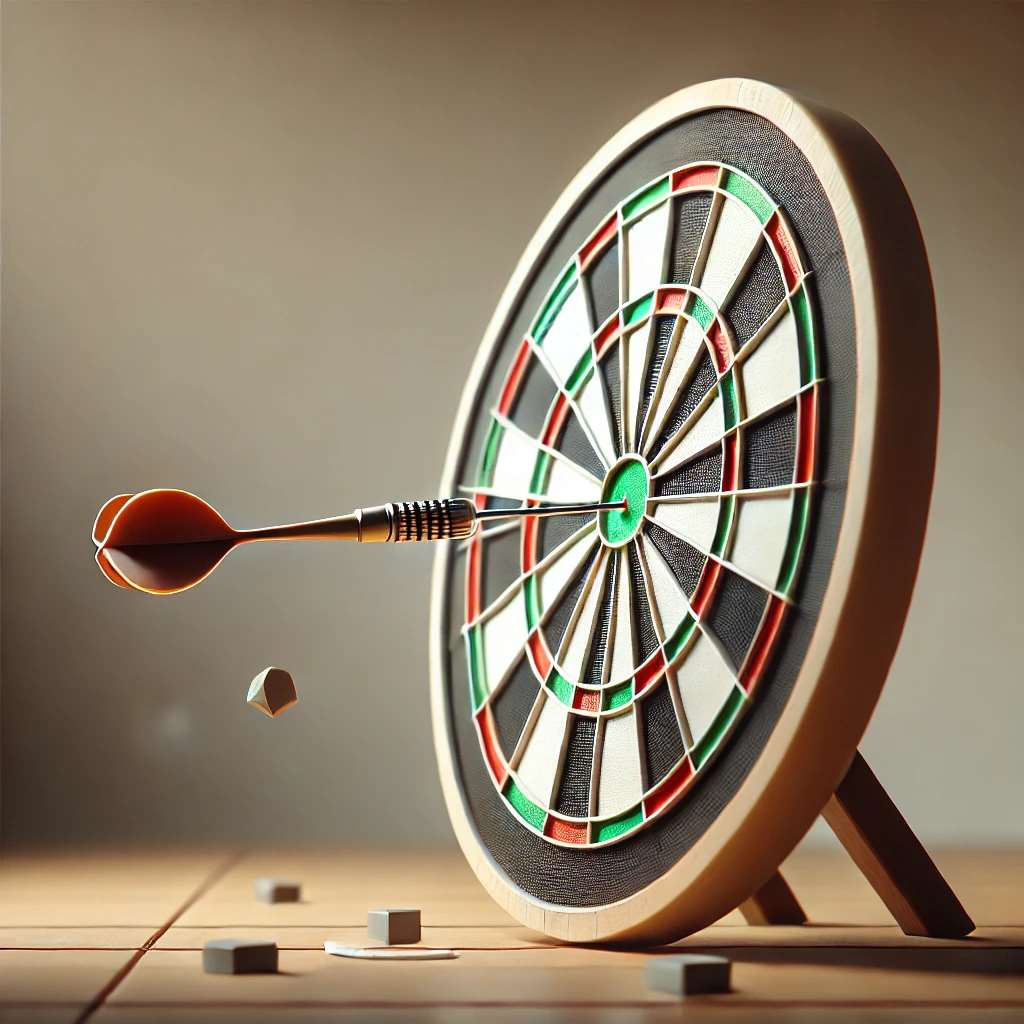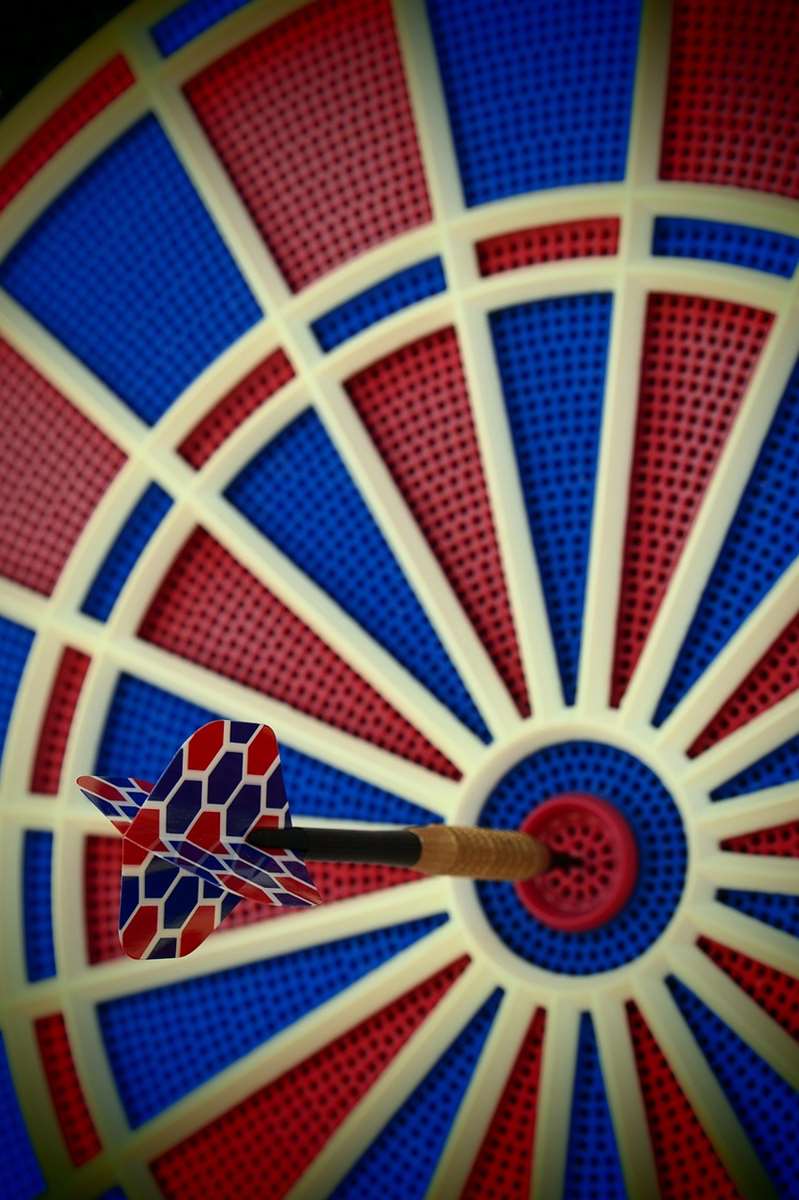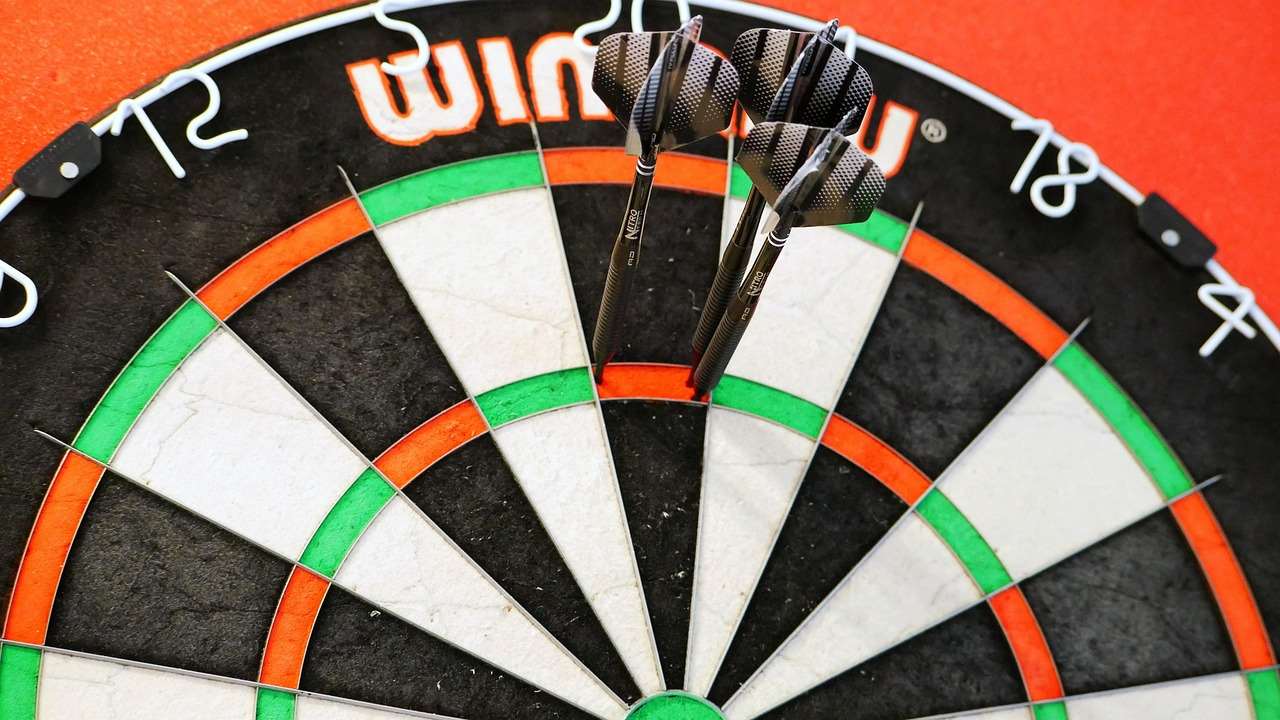A darts game finishes when one player reaches the agreed-upon finishing score, usually 501. This article will delve into the specifics of how and when do darts finish, exploring different game formats, scoring variations, and common scenarios that determine the end of a match. We’ll also cover helpful tips to improve your game and understanding of when a match concludes.
⚠️ Still Using Pen & Paper (or a Chalkboard)?! ⚠️
Step into the future! The Dart Counter App handles all the scoring, suggests checkouts, and tracks your stats automatically. It's easier than you think!
Try the Smart Dart Counter App FREE!Ready for an upgrade? Click above!
Many factors influence when do darts finish, and understanding them is key to enjoying the game. The most common game is 501, where players start at 501 points and subtract their score with each turn, aiming to finish on a zero score. This can take anywhere from a few minutes to a much longer period depending on the player’s skill and luck.
However, there are other game formats that determine when do darts finish differently, such as 301, cricket, or even custom games with unique scoring systems. Let’s explore these further.
Understanding When Do Darts Finish in Different Game Formats
While the question “when do darts finish” often refers to the 501 game, it’s essential to understand that other game types have their own finishing conditions. Let’s explore a few popular formats:
501: The Classic Darts Game
In 501, the primary concern for many players is figuring out when do darts finish. Players start with 501 points. Each turn, they throw three darts, and the total score of those darts is subtracted from their running total. The game concludes when a player reaches exactly zero points. Crucially, **the final dart must be a double or the bullseye**. This adds a layer of strategy and excitement, as players must carefully manage their score to leave themselves an appropriate finishing shot.

It’s crucial to note that if a player goes below zero (a “bust”), their score reverts to what it was at the start of that turn, meaning they haven’t successfully lowered their score in that round. This strategic aspect is what makes 501 so challenging and engaging.
301: A Shorter Version of the Classic Game
Similar to 501, 301 is another popular variation where the goal is to reach zero. However, the starting score is 301. The rules concerning the final dart and the ‘bust’ remain the same. The difference primarily lies in the shorter playtime, making it suitable for shorter matches or casual play. When do darts finish in 301? When a player reaches zero with the final dart being a double or the bullseye.
Cricket: A Different Kind of Finish
Cricket is a completely different game from 501 and 301. In Cricket, players aim to “close” numbers (typically 15 through 20, and the bull). This means hitting a number three times to “close” it. Once a number is closed, a player scores points by hitting that number more times than their opponent. When do darts finish in Cricket? The game finishes when a player closes all their numbers and then scores more points than their opponent on the closed numbers.

This makes understanding when do darts finish in Cricket quite different than other formats. The focus is on number closure rather than reaching a specific numerical target.
Other Game Variations
Many other dart game variations exist, each with its rules determining when do darts finish. Some games might involve reaching a specific score, others might have time limits, and still others might involve unique scoring systems. Always check the specific rules of the game you’re playing to understand how it concludes.
Strategies for Finishing a Darts Game
Knowing when do darts finish is only half the battle. Mastering the art of finishing requires careful planning and execution. Here are some key strategies:
- Check Your Score Regularly: Keep a close eye on your score to plan your shots effectively. Don’t get so caught up in the moment you forget the numerical goal.
- Aim for Doubles: In games like 501 and 301, the final dart *must* be a double or the bullseye. Practice your doubles to improve your finishing ability.
- Practice Your Checkout Shots: Checkout shots are the final throws needed to finish the game. Practice various checkout combinations to improve your consistency and reaction time.
- Manage Your Risk: Avoid unnecessary risks and avoid going for overly ambitious shots that could lead to a bust. Consistency is key.
- Mental Game: The mental aspect plays a significant role in darts. Stay focused, calm, and confident to execute your strategy effectively.
Learning how to plan your shots, knowing your numbers, and practicing regularly improves your chances of achieving a smooth finish.
Common Mistakes to Avoid When Finishing
Even experienced players can make mistakes that impact when do darts finish. Here are a few common errors to avoid:
- Losing Track of Your Score: This can lead to costly errors, such as going for the wrong shots or leaving an impossible finish.
- Rushing Your Shots: Take your time, aim carefully, and avoid rushing your throws. Precision is more important than speed.
- Overconfidence: Overconfidence can lead to risky shots and ultimately a bust.
- Ignoring the Double/Bull Requirement: This is a crucial rule. Neglecting this requirement will extend the game.

Practice will help you avoid these mistakes and consistently improve your game.
Using Technology to Enhance Your Darts Game
Technology can assist in several ways to track and help understand when do darts finish:
Many electronic dartboards have built-in scoring systems, eliminating manual scorekeeping. These systems can track your score, show the remaining points, and even suggest checkout shots, making the game easier to follow.
In addition to electronic dartboards, numerous apps are available for smartphones and tablets. These apps can act as electronic scorekeepers, offering statistics, and helpful features to analyze your game, including data-driven insights that may help improve understanding when do darts finish in specific scenarios.
An example of a great practice darts app with scoring is Practice darts app with scoring. Using apps like these offers additional tools for improving your game.
Different Styles of Play and Their Impact on Game End
The style of play significantly impacts when do darts finish. Aggressive players might aim for higher scores per turn but risk more busts, while cautious players might focus on steady progress and fewer risks, potentially taking longer to reach the finishing score.
Understanding the strengths and weaknesses of different playing styles is vital. Some players might excel at high scores but have difficulties checking out, while others are extremely consistent in their checkout shots even if their score progression is slower.

Choosing the style that best suits you enhances your overall performance and enjoyment of the game.
Beyond the Finish Line: Post-Game Analysis
Even after you know when do darts finish, the game continues beyond the score. Analyzing your performance is crucial for improvement. Review your shots, identify areas for improvement, and learn from your mistakes. This helps track progress and refine game strategy. Understanding your strengths and weaknesses allows for focused practice and development.
Keeping records of your games, including the number of darts thrown and the success rate of different shots, gives valuable data. This information allows for targeted practice, focusing on areas needing improvement. By reviewing and adjusting strategy, players can elevate their performance significantly. This also can lead to more satisfying finishes with higher consistency.
Conclusion
Understanding when do darts finish depends on the game format and rules you’re using. Whether it’s the classic 501, the shorter 301, or the unique scoring of Cricket, knowing the rules is the first step. Mastering the finishing stages requires practice, strategic thinking, and a controlled mental approach. By focusing on your strengths, avoiding common mistakes, and leveraging technology to your advantage, you can significantly improve your game. Practice your checkout shots, stay calm under pressure, and continuously analyze your performance to become a more confident and successful dart player. So, grab your darts, hone your skills, and enjoy the thrill of the game!

Remember to check out our other resources for more tips and tricks on improving your dart game! Consider checking out our guides on darts set up measurements for optimal gameplay, and our review of the Aspinall dart for potential equipment upgrades. For those looking for additional resources, see our pages on bullseye in darts how many points and electronic darts scorer for sale.
Hi, I’m Dieter, and I created Dartcounter (Dartcounterapp.com). My motivation wasn’t being a darts expert – quite the opposite! When I first started playing, I loved the game but found keeping accurate scores and tracking stats difficult and distracting.
I figured I couldn’t be the only one struggling with this. So, I decided to build a solution: an easy-to-use application that everyone, no matter their experience level, could use to manage scoring effortlessly.
My goal for Dartcounter was simple: let the app handle the numbers – the scoring, the averages, the stats, even checkout suggestions – so players could focus purely on their throw and enjoying the game. It began as a way to solve my own beginner’s problem, and I’m thrilled it has grown into a helpful tool for the wider darts community.